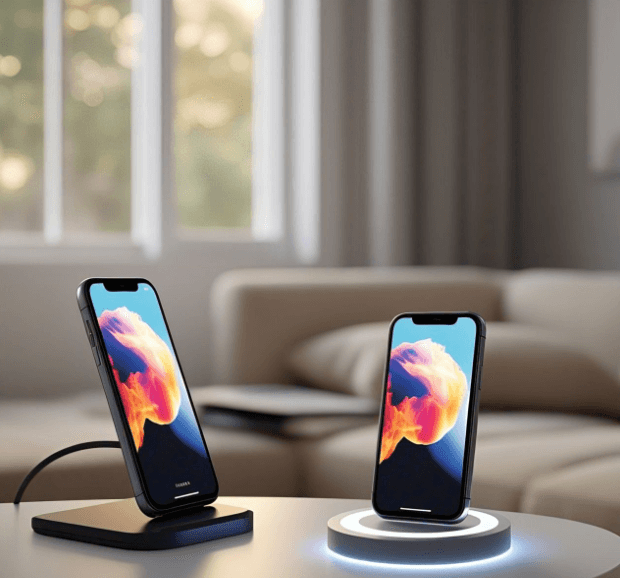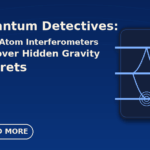Wireless Charging Secrets: How Your Devices Get Power Without Cables
Wireless charging has redefined convenience. Gone are the days of fumbling with tangled charging cables or dealing with worn-out connectors. Now, with just a simple drop-and-charge mechanism, your devices power up effortlessly. From smartphones and electric vehicles to medical implants, wireless charging is revolutionizing how energy is transferred.
But does it really feel like a breakthrough?
The first time I saw Apple and Samsung’s wireless chargers, I felt a bit… cheated. The charging pod was still plugged into the wall, and instead of a wire running into the phone, it was just delivering power through the back of the device. Was this really the future of charging, or just a cleverly repackaged gimmick?
If you’ve ever had the same thought, you’re not alone—but you’re also mistaken.
Wireless charging isn’t just about eliminating cables; it’s about leveraging electromagnetic fields and resonant energy transfer to create a truly seamless power experience. In this article, we’ll dive into the fascinating science behind wireless charging, its real-world applications, and how it’s shaping the future of energy transfer.

The science behind Wireless charging is electromagnetic induction and resonant inductive coupling. We will deal with both these concepts and understand how both put together enables direct transfer of energy without physical contact.
What is Electromagnetic induction?
Electromagnetic induction, as described by Faraday’s Law, is the process by which a changing magnetic field induces an electromotive force (EMF) in a nearby conductor.
In wireless charging, an alternating current (AC) flows through the transmitter coil, generating a changing magnetic field. When a receiver coil is placed within this field, the changing magnetic flux induces an AC voltage across it. This results in formation of induced current in the receiver coil which is present within the phone-leading to charging of phone. The direction of induced current within the phone is opposite to the direction of the current within the transmitter coil, thus following Lenz’s Law, which states that the induced current always opposes the change that created it.

But with electromagnetic induction we face two shortcomings:
- Electromagnetic induction is effective only over short distances.
- The energy transfer that happens due to electromagnetic induction has a lower efficiency. Thus energy leakage happens.
To counter these shortcomings we use resonant induction coupling (RIC) in wireless charging
What is Resonant induction coupling?
Resonant Inductive Coupling is a wireless power transfer (WPT) technique that enhances efficiency by using resonating coils tuned to the same frequency. It builds on the principle of electromagnetic induction but improves range and power transmission.
How It Works:
- Transmitting Coil Generates Magnetic Field
- A coil (primary) is powered with an alternating current (AC), producing a time-varying magnetic field.
- Resonance Enhances Energy Transfer
- The primary coil is tuned to a specific resonant frequency using a capacitor (Transmitter circuit)
- A secondary coil (receiver) is also tuned to the same frequency, which increases energy absorption through resonance.
- Alternating current of same resonant frequency is passed through the transmitter circuit.
- Efficient Energy Transfer at a Distance
- Unlike standard inductive coupling (e.g., in transformers), resonance allows energy to be transferred efficiently over greater distances without significant loss.
- Selective Power Transfer
- The setup ensures only devices tuned to the same frequency receive energy.
But what do you mean by resonant frequency:
In an electrical circuit containing an inductor (L) and a capacitor (C), the resonant frequency (\(f\))is the frequency at which energy oscillates between the capacitor and the inductor without significant loss.
- The capacitor stores energy in the form of an electric field.
- The inductor stores energy in the form of a magnetic field.
- At the resonant frequency, energy shuttles back and forth between the capacitor and inductor with minimal resistance.
This frequency is given by the formula:
\begin{equation} f = \frac{1}{2\pi \sqrt{LC}}
\end{equation}

In the figure above, we have depicted how Resonant induction coupling is used to wirelessly transfer energy. Lets discuss each component of the above setup and why they are needed.
- AC- DC converter- Grid AC (50/60 Hz) is too low frequency for efficient wireless power transfer. By converting to DC first, we gain complete control over the subsequent AC signal generation, allowing us to precisely create the optimal frequency for resonant coupling (typically 100 kHz to 13.56 MHz).
- High Frequency Oscillator (HF Oscillator)– Different wireless charging applications require different frequencies. Medical implants might use lower frequencies (100-200 kHz) while consumer electronics often use higher frequencies (6.78 MHz). The DC-to-HF conversion allows this customization.
- Resonant Circuit– Both Transmitter & Receiver Resonant circuit contain a combination of primary coil + capacitor. Both the circuits are tuned to a specific frequency, which is determined by their respective inductance (L) and capacitance (C). The resonant frequency is given by \( f = \frac{1}{2\pi \sqrt{LC}} \). The HF oscillator generates current at precisely this shared resonant frequency.
- AC-DC rectifier– The rectifier converts the alternating induced current to DC.
- Voltage regulator- The voltage regulator protects the device from power fluctuations, ensuring that only a stable and appropriate current is supplied.
Conclusion
Electromagnetic induction (EMI) and resonant inductive coupling (RIC) have revolutionized wireless charging by enabling efficient and contactless power transfer. With their numerous advantages, these technologies are being widely adopted across various industries.
Applications:
- Wireless Charging: Used in smartphones, laptops, and electric vehicles for seamless power delivery.
- Medical Implants: Enables wireless power transfer for pacemakers and neural implants, eliminating the need for invasive procedures.
- Industrial & Consumer Electronics: Supports wireless charging for drones, robots, and wearables, enhancing mobility and convenience.
- Space & Underwater Communication: Facilitates energy transfer in satellites and submarine systems where wired connections are impractical.



